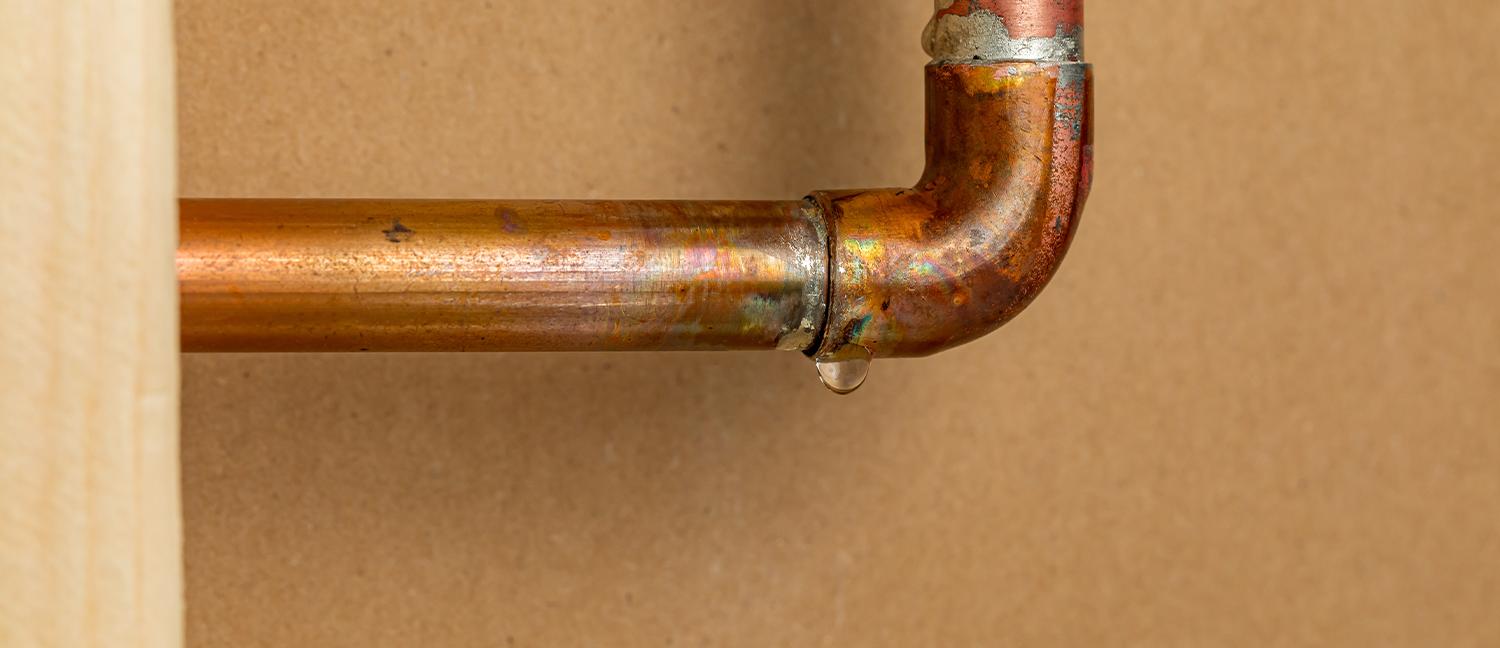Traumatic damp symptoms, causes and treatment

Penetrating damp, rising damp and damp caused by condensation are well recognised and documented within the building industry. The government guidance on damp and mould brought another form of dampness to light – one that is well-known but not often thought about in its own category.
This new term for dampness caused by a leak or environmental flooding is ‘traumatic damp’.
What is traumatic damp?
Traumatic damp is defined as dampness caused by a building defect that lets moisture into the home.
The Government Guidance lists a wide range of causes:
- Overflowing baths or sinks
- Waste and heating pipe leaks
- Water storage vessel leaks
- Environmental flooding or flooding from neighbouring properties
The guidance states that traumatic damp can occur from some outside sources, but it is important not to confuse traumatic damp with penetrating damp.
Penetrating damp is when external moisture like rain, gets in through walls, roofs, windows or floors. It often (but not always) accumulates over time. In comparison, traumatic damp occurs due to severe and often sudden housing damage. If penetrating damp is a long-term severe illness, then traumatic damp is an immediately life-threatening emergency.
How to spot traumatic damp

Traumatic damp is relatively easy to diagnose compared to other forms of dampness due to its often extreme nature. However, there is one cause of traumatic damp that can pass under the radar.
Copper piping is common in heating systems in older and newer homes. Pinhole leaks in copper water pipes can go undetected for long periods of time. These miniscule holes can be caused by corrosion over time or from exposure to steel rebar and concrete. Pipes over 20 years old are more susceptible to this kind of damage.
Only a tiny amount of water escapes from a pinhole leak, so it can take a long time for one to become a noticeable damp problem. Consistently damp areas can rot floorboards.
Your home’s plumbing system should be checked regularly, at least once a year, to help detect corroded pipework before it becomes a problem. Always engage a qualified plumber to carry out checks and maintenance.
Other traumatic damp warning signs
Keep an eye on your water bill. There could be a leak somewhere on your property if it seems higher than normal. The sound of dripping water behind walls, under floorboards and inside kitchen cabinets may also give away the location of a leak. Like all types of dampness in the home, traumatic damp can cause musty smells and black mould growth.
Environmental flooding
Make sure all excess water and saturated belongings are fully removed if your house becomes flooded. All wet surfaces must be fully dried out so as not to cause a long-term damp problem. Saturated gypsum or cement plasters should be replaced with a suitable damp-resistant plaster.
Assess the home for:
- Defects in seals
- Cracks in walls, windows and doorframes
- Unprotected porous masonry
- Vents and airbricks at water entry level
- Party walls
- Ground seepage
Every home should be prepared for environmental flooding. Our free-to-download Flood Remediation Guidance includes flood resilience and flood resistance systems to keep homes dry should the worst happen.
Protect home and health

Damp means moisture, and excessive moisture in the house isn’t good news for anybody. Traumatic damp can create a host of issues for home and health.
Black mould can take root on walls and ceilings. Plasterboard, grout, wallpaper, painted surfaces and silicone seals are very common breeding grounds for black mould growth when moisture levels are high enough.
But other types of fungal growth like dry rot and wet rot thrive in warm and damp environments. Traumatic damp over a long period of time on floorboards or roof battens is the perfect environment for rot.
Wood-decaying fungi like wet and dry rot digest wood to cause widespread structural damage. They circulate outside, and can be brought in unknowingly on clothing and objects. They start to grow when the spores settle on a suitably damp and warm surface. The fruiting body of the fungus produces spores which spread around the environment to spread it to a wider area.
These spores cannot grow in a dry environment. A timber treatment like SoluGuard Woodworm & Rot can prevent wood-decaying fungi growth. SoluGuard can also be used as a curative treatment in combination with rotten timber removal. Probor Wood Preservatives can also be used by qualified wood preservation professionals to prevent and treat wood rot.
The NHS recognises damp and mould as a health hazard. Mouldy conditions are linked closely to poor respiratory health. They can worsen asthma, trigger allergic reactions and are especially harmful for:
- Babies and younger children
- People with respiratory conditions
- People with a weakened immune system
- Older people
Explore the physical and mental health costs of mould here.
Four steps to treat traumatic damp
The nature of traumatic damp means that it can be unavoidable. Be prepared for the worst. Once the leak has been fixed and the excess water drained away, here are four steps to get your flooded home back to a dry state and mitigate any future damage:
- Dry out internal walls: Ensure damp rooms are kept at a consistent warm temperature in combination with ventilation. This will stop condensation from forming on damp walls and floors. Dehumidifiers can also help dry out damp rooms and further reduce the risk of mould and mildew growth.
- Waterproof external walls: Apply breathable waterproofing masonry cream like Stormdry Masonry Protection Cream on the exterior walls. This will repel water from the brickwork but also line, rather than block, the masonry’s pores. Moisture can escape and the damp external wall will dry out.
- Replaster: Damp gypsum or cement plaster must be replaced. Environmental flooding can contaminate plaster with groundwater salts. They cause unsightly tidemarks and damp spots on the wall that stay even once the rest of the house is dry. Apply a damp and salt-resistant plaster from the Dryzone Renovation Plasters range. Damp-resistant plaster can be applied in the same way as traditional plasters and aid the drying-out of damp walls.
- Paint: Finish the job with a mould-resistant emulsion paint from the Dryzone range. They contain a mould-killing barrier that protects against mould growth for up to five years, even in areas of consistently high condensation.
These tips are general. Every home is different and no two incidences of traumatic damp are the same. Always engage professional advice before taking the steps outlined above. But don’t worry — we can help! The Safeguard Technical Team is always on hand to offer advice about damp prevention and remediation. Call or email us at the link below.